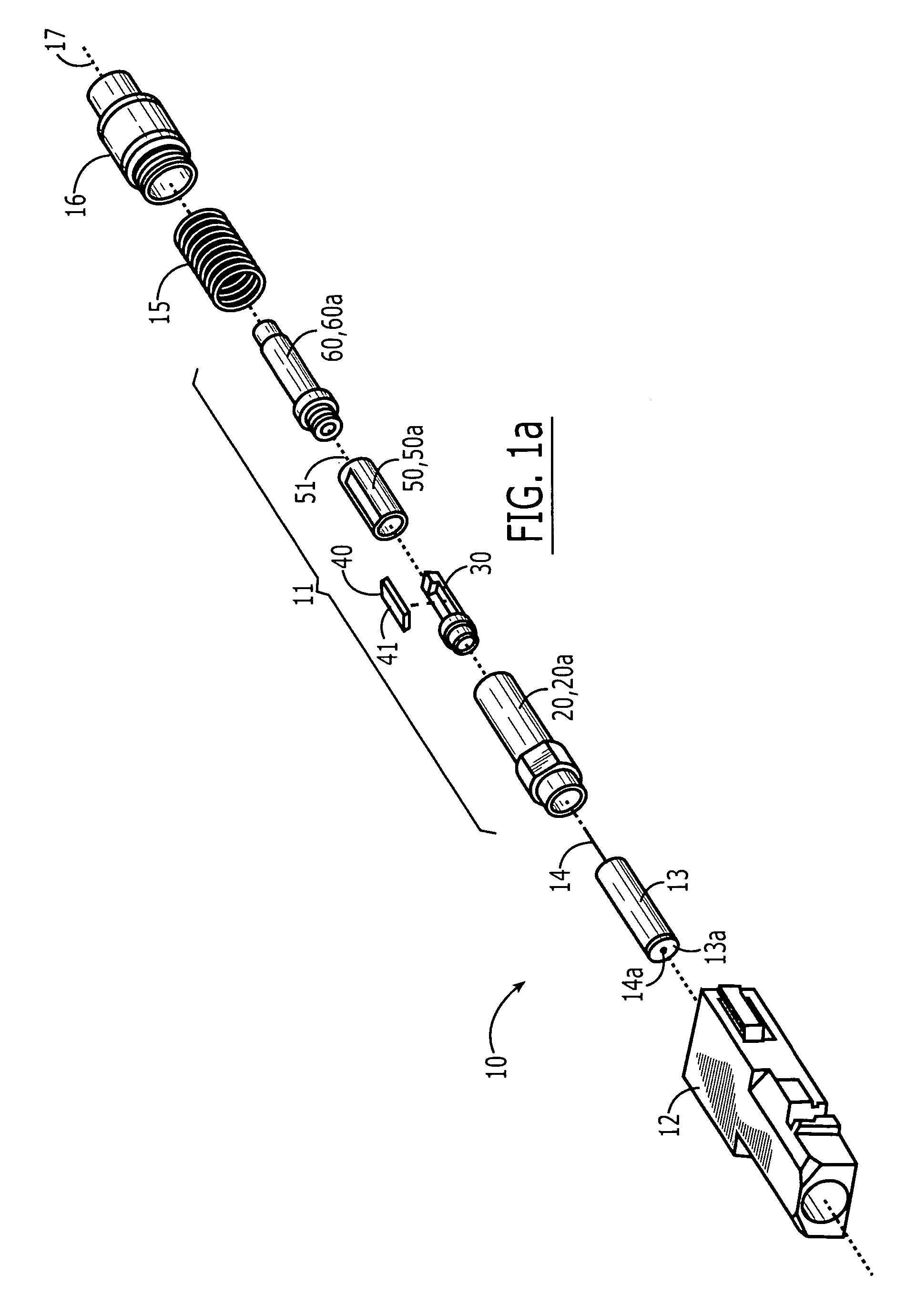Optical fiber clamping assembly
a technology of optical fiber and clamping assembly, which is applied in the field of field-installable optical connectors, can solve the problems of difficult if not impossible fiber insertion, and achieve the effects of enhancing the alignment of fiber, reducing insertion loss, and maintaining platform stability
- Summary
- Abstract
- Description
- Claims
- Application Information
AI Technical Summary
Benefits of technology
Problems solved by technology
Method used
Image
Examples
Embodiment Construction
[0033]Referring to FIGS. 1a and 1b, preferred embodiments of an SC-type connector 10 and of an LC-type connector 10′ comprising the clamping assembly 11, 11′ of the present invention are shown, respectively, in exploded views. It should be understood that the present invention is not limited to an SC- and LC-type connectors and may be practiced in any conventional or later-developed connector, including, for example, traditional ST and FC-type connectors, plus small form factor designs, such as, MU, MTRJ, MPX, and MPO-type connectors. Furthermore, the clamping assembly of the present invention is not limited to connector applications and may be used in any optical application requiring a fiber to be secured to a structure. For example, the clamping assembly may be used as a splicing device to optically couple two fibers or it may be incorporated into an active device, such as a transceiver, or a passive device, such as a multiplexer, to optically couple a fiber to the device. For pu...
PUM
 Login to View More
Login to View More Abstract
Description
Claims
Application Information
 Login to View More
Login to View More - R&D
- Intellectual Property
- Life Sciences
- Materials
- Tech Scout
- Unparalleled Data Quality
- Higher Quality Content
- 60% Fewer Hallucinations
Browse by: Latest US Patents, China's latest patents, Technical Efficacy Thesaurus, Application Domain, Technology Topic, Popular Technical Reports.
© 2025 PatSnap. All rights reserved.Legal|Privacy policy|Modern Slavery Act Transparency Statement|Sitemap|About US| Contact US: help@patsnap.com



